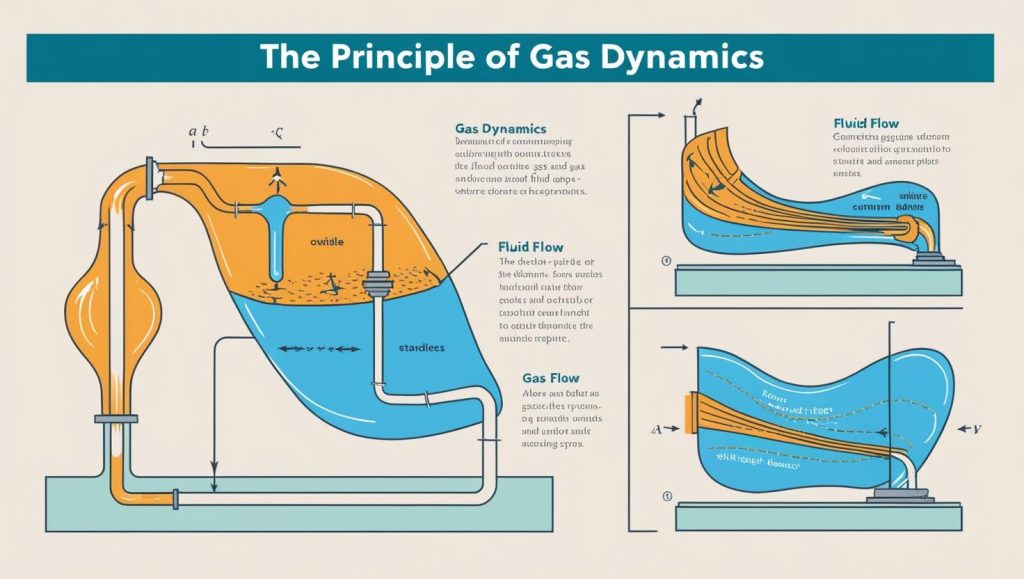Introduction: Why Gas Dynamics Homework Help is Essential
Gas dynamics is a critical field of study within fluid mechanics that deals with the motion of gases and the forces that influence them. It is especially important in aerospace engineering, thermodynamics, and other industries that involve high-speed fluid flow, such as jet propulsion, rocket design, and HVAC systems. For students learning gas dynamics, the concepts of compressible flow, shock waves, and nozzle design can be quite challenging.

This Gas Dynamics Homework Help guide aims to simplify these concepts, offering a detailed explanation of the essential principles of gas dynamics, methods for solving problems, and useful resources for mastering the subject.
What is Gas Dynamics?
Gas dynamics is the study of how gases behave under various conditions, particularly in the context of high-speed flows. The field primarily concerns the study of compressible fluids, where changes in pressure, temperature, and velocity are significant.
Key Concepts in Gas Dynamics:
- Compressible Flow: Gas flows where density changes significantly due to pressure and temperature changes.
- Mach Number: The ratio of the speed of a flow to the speed of sound in the medium.
- Shock Waves: A sudden change in pressure and velocity caused by high-speed flows.
- Isentropic Flow: Flow where entropy remains constant (no heat exchange or friction).
- Oblique and Normal Shocks: Types of shock waves that occur in different flow conditions.
Key Topics in Gas Dynamics Homework
1. Compressible Flow and the Mach Number
The Mach number is a dimensionless quantity that helps categorize the flow of gases:
- Subsonic Flow: Mach number M<1M < 1M<1
- Transonic Flow: Mach number M≈1M \approx 1M≈1
- Supersonic Flow: Mach number 1<M<51 < M < 51<M<5
- Hypersonic Flow: Mach number M>5M > 5M>5
In compressible flow, changes in the density of the gas occur, leading to significant variations in pressure and temperature. This is different from incompressible flow, where the density remains constant.
Example Question:
A jet is flying at a speed of 400 m/s at sea level. The speed of sound is 340 m/s. What is the Mach number?
Solution:
M=va=400340=1.18M = \frac{v}{a} = \frac{400}{340} = 1.18M=av=340400=1.18
This is supersonic flow.
External Resource: Mach Number and Compressible Flow – NASA
2. Shock Waves and Their Behavior
In gas dynamics, shock waves occur when an object travels through a compressible fluid at a speed faster than the speed of sound. These waves cause abrupt changes in pressure, temperature, and velocity.
- Normal Shock Waves: A shock wave that is perpendicular to the flow direction.
- Oblique Shock Waves: A shock wave that occurs at an angle to the flow direction.
Example Question:
Calculate the post-shock pressure and temperature when air flows at Mach 2.5 through a normal shock, assuming the flow is adiabatic and the gas behaves as an ideal gas with γ=1.4\gamma = 1.4γ=1.4.
Solution:
Using the shock relations for normal shocks: P2=P1[(2γM12−(γ−1))(γ+1)]P_2 = P_1 \left[ \frac{(2\gamma M_1^2 – (\gamma – 1))}{(\gamma + 1)} \right]P2=P1[(γ+1)(2γM12−(γ−1))]
Where P1P_1P1 is the pre-shock pressure, P2P_2P2 is the post-shock pressure, and M1M_1M1 is the pre-shock Mach number. Similarly, we can calculate the post-shock temperature using the shock relations for temperature.
External Resource: Shock Waves and Nozzles – University of Cambridge
3. Isentropic Flow
Isentropic flow refers to flow in which entropy remains constant, implying that the flow is both adiabatic (no heat transfer) and reversible (no friction losses). Isentropic relations are essential for analyzing idealized gas flows in turbines, compressors, and nozzles.
The isentropic flow relations are: T2T1=(P2P1)γ−1γ\frac{T_2}{T_1} = \left( \frac{P_2}{P_1} \right)^{\frac{\gamma – 1}{\gamma}}T1T2=(P1P2)γγ−1
where T1T_1T1 and T2T_2T2 are the temperatures before and after a change, and P1P_1P1 and P2P_2P2 are the corresponding pressures.
Example Question:
For an isentropic expansion of air in a nozzle, calculate the exit temperature if the pressure ratio is 3.
Solution:
Using the isentropic temperature-pressure relation: T2=T1(P2P1)γ−1γT_2 = T_1 \left( \frac{P_2}{P_1} \right)^{\frac{\gamma – 1}{\gamma}}T2=T1(P1P2)γγ−1
where T1T_1T1 is the initial temperature, and P1P_1P1 and P2P_2P2 are the pressures at the start and end of the process.
External Resource: Isentropic Flow Analysis – Thermopedia
4. Nozzle Design and Area-Mach Number Relationship
In gas dynamics, nozzles are used to accelerate gases to supersonic speeds, such as in jet engines and rocket propulsion systems. The flow through a nozzle can be analyzed using the area-Mach number relationship: AA∗=(1M)(2γ+1)γ+12(γ−1)\frac{A}{A^*} = \left( \frac{1}{M} \right) \left( \frac{2}{\gamma + 1} \right)^{\frac{\gamma + 1}{2(\gamma – 1)}}A∗A=(M1)(γ+12)2(γ−1)γ+1
where AAA is the cross-sectional area, A∗A^*A∗ is the throat area, MMM is the Mach number, and γ\gammaγ is the adiabatic index.
Example Question:
Calculate the throat area of a nozzle that accelerates air from Mach 1.5 to Mach 2, given the inlet area is 0.5 m².
Solution:
Using the area-Mach number relation for a nozzle, you can calculate the throat area by rearranging the formula and substituting known values.
External Resource: Gas Dynamics – Nozzle Design – MIT OpenCourseWare
How to Excel in Gas Dynamics Homework
- Understand the Fundamentals: Focus on key concepts like Mach number, shock waves, isentropic flow, and nozzle design.
- Practice Problems Regularly: Solve a variety of problems to understand the different applications of gas dynamics concepts.
- Use Diagrams and Visual Aids: Gas dynamics problems often involve flow patterns and pressure-temperature diagrams that can help clarify concepts.
- Leverage Online Resources: Use educational platforms like MIT OpenCourseWare and NASA’s Glenn Research Center for detailed explanations and additional practice problems.
Additional Resources for Gas Dynamics Homework Help
- MIT OpenCourseWare – Gas Dynamics
- NASA Glenn Research Center – Aerodynamics
- Thermopedia – Gas Dynamics
- University of Cambridge – Shock Waves
Conclusion: Mastering Gas Dynamics Homework
Gas dynamics is a fascinating and essential field of study for anyone pursuing aerospace engineering, mechanical engineering, or fluid mechanics. By mastering key concepts such as compressible flow, shock waves, isentropic relations, and nozzle design, you will not only excel in your Gas Dynamics Homework Help, but also lay a strong foundation for your future career in engineering.


